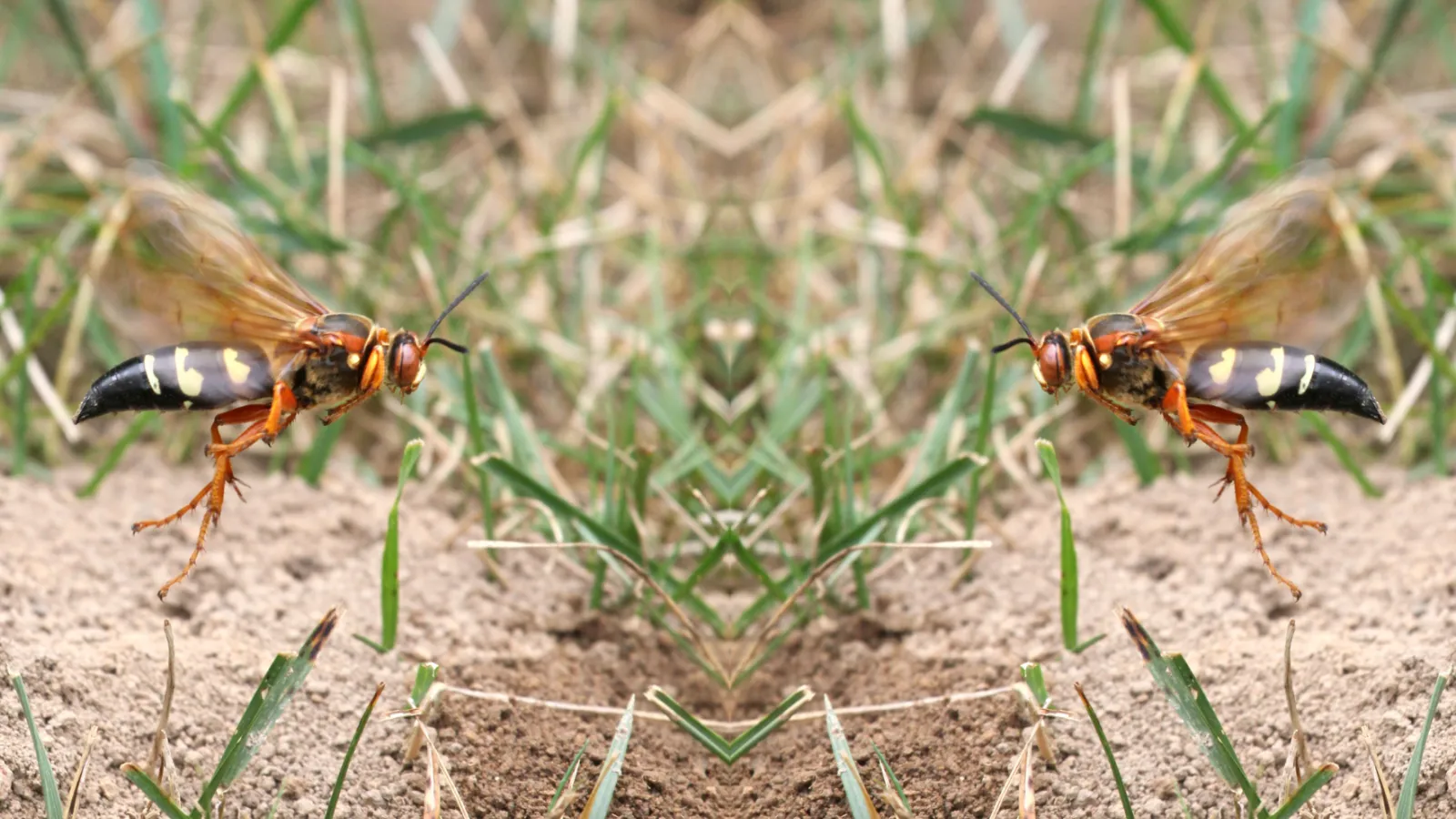
Cicada Killers
Latin Name: Sphecius speciosus
Cicada killer wasps (Sphecius speciosus) are large, solitary insects known for their impressive size and distinctive behavior. Despite their intimidating appearance, these wasps are generally non-aggressive toward humans and are considered beneficial to the environment due to their role in controlling cicada populations. Measuring 1.5 to 2 inches in length, cicada killer wasps are among the largest wasps in North America. They have black bodies with yellow markings on their abdomens, resembling yellow jackets but on a much larger scale. Their wings are brownish and translucent, and their legs are reddish-brown.
These wasps favor sunny, sandy, or loose soil for nesting and are often found in gardens, lawns, sidewalk edges, golf courses, and open, well-drained areas with sparse vegetation. Cicada killer wasps are solitary by nature, unlike social wasps such as yellow jackets. Females dig individual burrows to rear their young, while males patrol nesting areas and display territorial behavior. However, males lack stingers and pose no physical threat to humans. Overall, these wasps are non-aggressive and rarely sting unless handled or provoked.
The life cycle of cicada killer wasps begins when a female digs a burrow in sandy or loose soil, creating a network of tunnels with individual chambers. She hunts cicadas, paralyzing them with her sting, and drags the immobilized prey back to her burrow. After placing a cicada in a chamber, the female lays a single egg on it and seals the chamber. When the egg hatches, the larva feeds on the cicada, eventually pupating within the burrow and emerging as an adult the following summer.
Cicada killer wasps play an essential ecological role by helping to control cicada populations, which can otherwise damage trees and shrubs. Their behavior and life cycle make them a fascinating and beneficial part of the natural environment.
Similar Pests: Paper Wasps, Yellow Jacket Wasps
